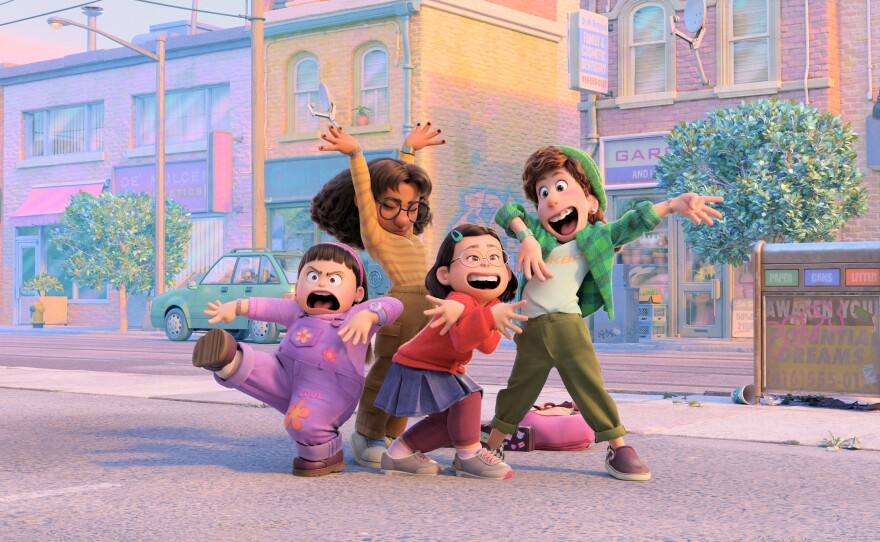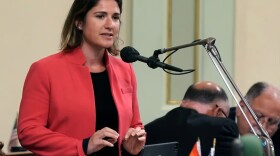At its heart, Disney/Pixar's Turning Red is a coming-of-age story about Meilin Lee, a 13-year-old Chinese Canadian girl going through puberty. The hitch is if she gets too excited, she turns into a giant red panda.
It’s already earning praises for its depiction of the challenges of controlling teenage emotions. And of cultural and generational differences. But for parents of children with Type 1 diabetes, a few scenes resonate with them. It's subtle and if you blink, you might miss it.
RELATED: UCSD Researchers Find Common Diabetes Drug May Reduce COVID-19 Inflammation
In the early part of the movie when Lee, voiced by Rosalie Chiang, turns into a panda at school after she caught her mother spying on her, she runs into the bathroom where she is caught by Stacy Frick, voiced by Lily Sanfelippo, a recurring character. Lee slowly pushed Frick back into a bathroom stall. The scene is played for laughs but for parents and kids with diabetes, there was something else that caught their eyes.
Frick has a blue patch on her arm — and that patch looks suspiciously like a continuous glucose monitor. The Internet noticed right away. Some in the Type 1 diabetes community even speculated that the patch was a Dexcom G6 monitor.
RELATED: 'Turning Red' is a turning point for Asians in film. Why is it seen as unrelatable?
Dexcom is based in Sorrento Valley, San Diego's tech hub, making glucose monitoring devices.
"That people recognize Dexcom right away, that's just the impact of the benefits that Dexcom is giving patients living with diabetes every day," Dexcom's marketing manager Katie Campbell said. She also has a son living with Type 1 diabetes.
She thinks it's amazing that Pixar would feature not one, but two diabetic characters in the film. Not only that, the film didn't make a big deal out of it.
"I think sometimes when you have a kid living with Type 1, it's really hard to find that representation and find that moment to let him know, hey, there's other people out there like you," Campbell said. "And showing it in a way on the big screen that it was an everyday normal thing and not something to point out — maybe in a negative light."

She said it helps to show that there are people like him out there. That was exactly how Skylar Frazier felt.
“When I first saw it, I was like, they do that now?" she said. "Because they've never been doing that."
Skylar's mother, Anicia Frazier, said she’s been watching the movie nonstop. They noticed the patch right away.
“She was newly diagnosed when we saw that and it just seemed like everything working together in order to make her feel comfortable,” the Vista mother said.
When children see someone like them represented in pop culture, it helps them establish their self-identity and shows that they are not alone, said Linda Brault, an education specialist at WestEd in San Marcos. She specializes in making education inclusive for children with disabilities and health conditions.
Brault said representation matters.
“Anytime that you have a broad representation in pop culture in the — you know, something that people can see, that just helps children's identity,” she said. "It does make a difference for people who, themselves, can see themselves on screen."
Pixar said the inclusion of diabetic characters was intentional. Susan Fong, the technical supervisor of "Turning Red," had a hand in making sure the depictions were true-to-life. She, herself, was diagnosed with Type 1 diabetes as a child.
But since the movie was set in 2002, Pixar said the patch shown is actually an insulin infusion set. Dexcom G6 glucose monitor went on the market in 2006.
While the device isn't specifically Dexcom's Campbell said, it's the message that matters.
"I think kids everywhere just really appreciated that and loved seeing that on the big screen," she said.





